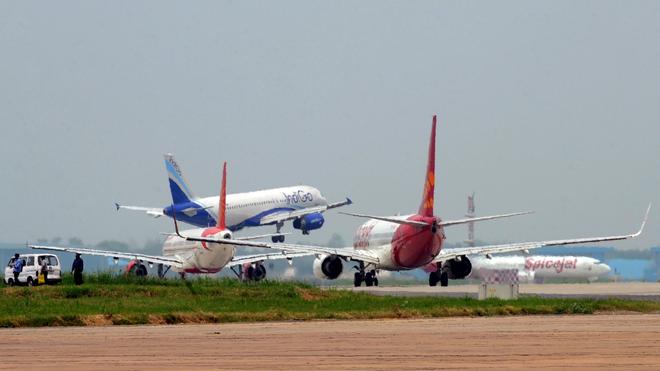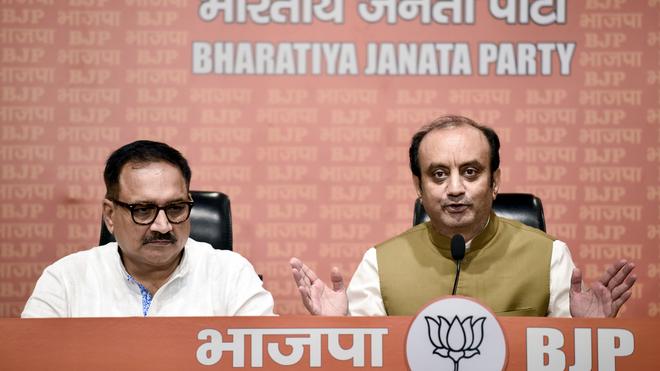SpiceJet vs IndiGo: How pandemic set the two airlines on diverging paths
The never-ending financial troubles of the cash-strapped SpiceJet airline were once again on display when passengers flying from Dubai to India were barred from checking in due to the airline’s unpaid dues. Following this, the Directorate General of Civil Aviation placed SpiceJet under ‘enhanced surveillance’. Earlier that month, they audited the airline and found ‘certain deficiencies’. These new challenges arose while the airline was already dealing with payment and provident fund dues to employees and legal disputes as lessors were not paid. Pilots and cabin crew were last paid salaries for June and 150 cabin crew were sent on unpaid leave, The Hindu had reported.
Data shows that a series of steps taken to expand the airline in the years leading up to the pandemic — driven by the sudden collapse of Jet Airways and the desire to capture a larger share of the growing market — may have proven to be costly.
Unlike the market leader IndiGo, who had been increasing the size of its fleet and crew steadily over time and expanded further before the pandemic, SpiceJet’s leap was sudden.
Chart 1 shows the fleet size of IndiGo and SpiceJet over time.
Between FY18 and FY20, IndiGo increased its fleet size from 159 to 262 aircraft, with SpiceJet improving from 60 to 114 . Both also went on a hiring spree during the period.
Chart 2 shows the strength of pilots and cabin crews in IndiGo and SpiceJet
Pilots employed by IndiGo and SpiceJet increased from about 2,350 to 4,000 and about 675 to 1,170, respectively, in the period. Cabin crew of IndiGo and SpiceJet increased from about 4,600 to 6,500 and 1,200 to 2,300, respectively.
Chart 3 shows the market shares of various airlines in %.
The move did pay off briefly, with SpiceJet surpassing Air India in market share, becoming the second-largest airline by the end of 2019, taking over from Jet Airways. IndiGo was also placing similar bets, to make the most of the Jet Airways exit and a growing market, enhancing its market share even further.
However, the pandemic hit and passenger flights came to a grinding halt during the first COVID-19 wave. During the successive waves, the strictness of the lockdown was eased in steps, with flyers trickling in small numbers. During these months, airlines continued to incur the cost of aircraft rentals, maintenance costs, airport hangar charges, and salaries paid to employees. Both the airlines had to endure such expenses, and IndiGo’s bill was much higher given more planes and a bigger crew.
Table 4 shows select expenses of IndiGo and SpiceJet in Rs crores. During the pandemic phase — FY21 and FY22 — IndiGo paid over ₹20,950 crore on rentals, airport charges, maintenance costs, and employee benefits. For SpiceJet, the figure was around ₹5,880 crores.
With barely any income and huge recurring expenses, the carriers incurred massive losses, with IndiGo’s losses being way higher than SpiceJet’s.
Chart 5 shows the profit/loss recorded after tax in Rs crore. IndiGo recorded a combined loss of over ₹12,000 crore during the pandemic years.
SpiceJet saw its losses widen further during the pandemic years (₹2,720 crores loss in FY21 and 22).
As IndiGo had a bigger market share before the Covid downturn hit and was in better financial shape, it managed to bounce back, while SpiceJet’s could not. After the pandemic blues wore off, SpiceJet plumbed newer depths every quarter, Air India got privatised and with Vistara getting merged with Tata’s carrier, a vacuum was created in the market, which IndiGo has comfortably filled. Its market share crossed 60% this year, while SpiceJet’s fell below 5%.
Source: Director General of Civil Aviation, financial reports of SpiceJet and IndiGo
nihalani.j@thehindu.co.in
vignesh.r@thehindu.co.in
Published - September 06, 2024 08:00 am IST









)

)
)
